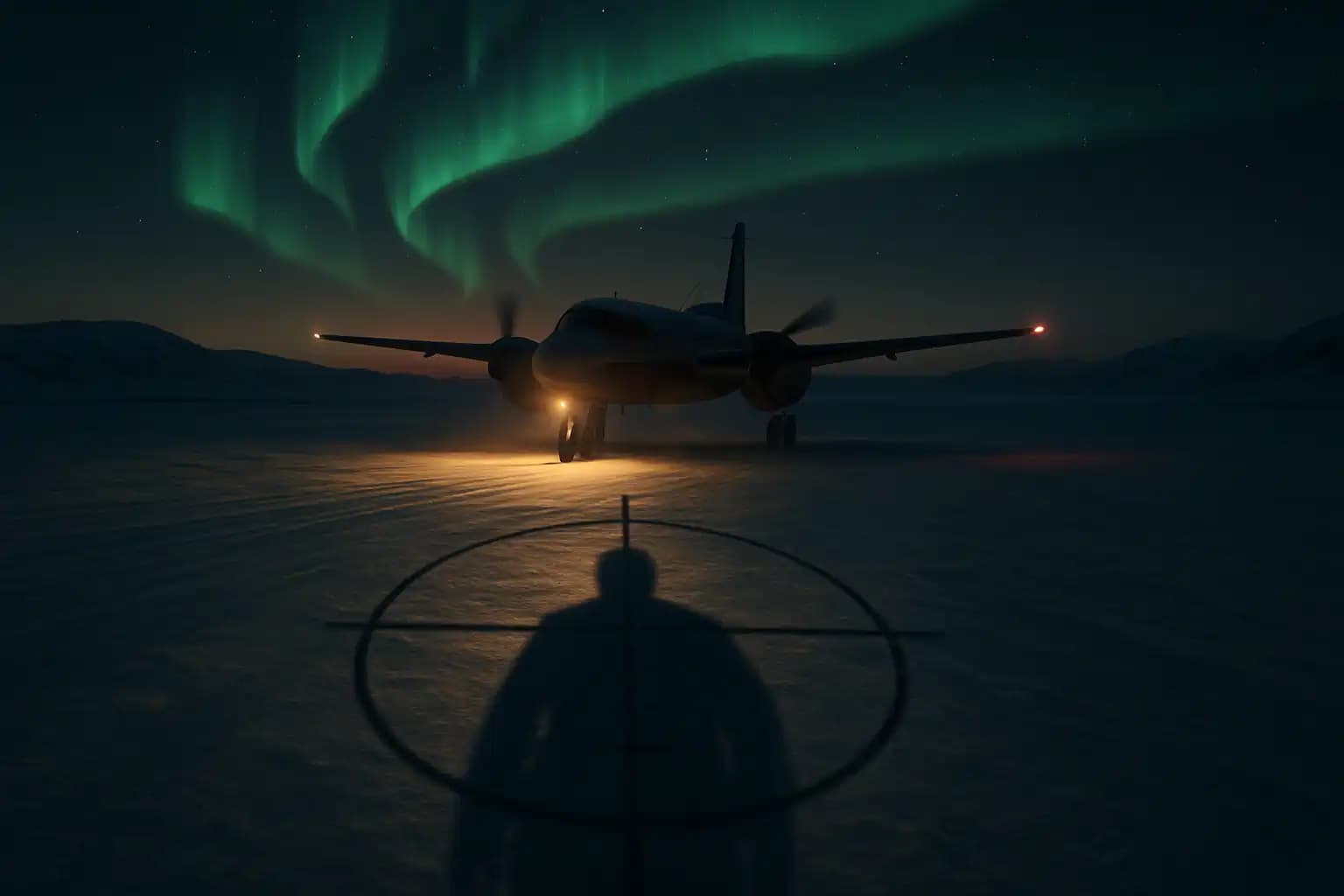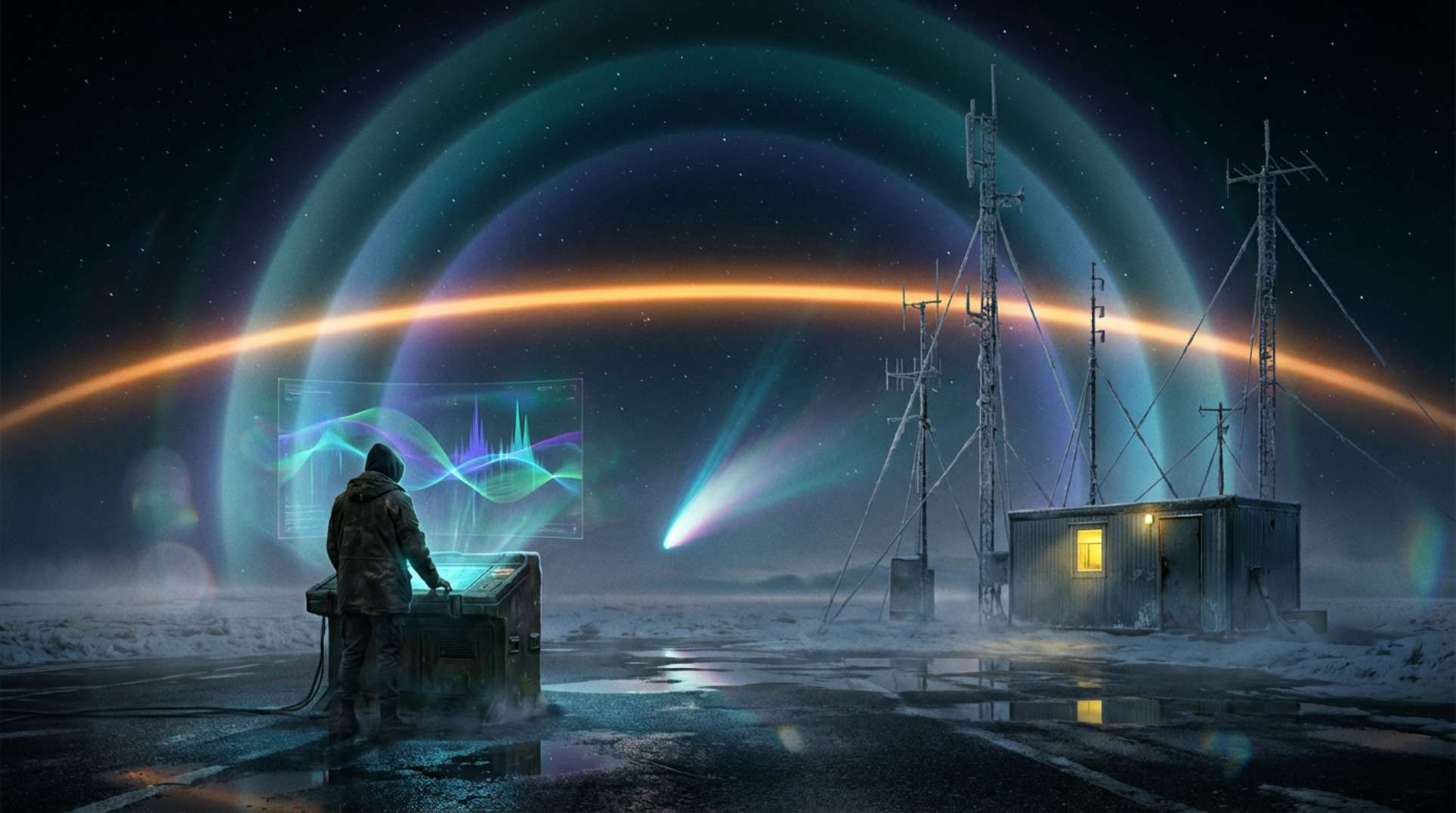A flicker of green text, posted at 2:14 a.m. on the /pol/ board, landed like a grenade. An anonymous user claimed he was dying in a Winnipeg hospice and needed to unload a secret: for twenty years, he guided elites on a private reserve above Great Slave Lake, where they hunted abducted drifters for sport. Within hours, the thread splintered into screenshots and TikTok explainers, each more frantic than the last. True-crime streamers promised exposés; Reddit sleuths fired up satellite overlays. The Arctic, already a canvas for rogue auroras and disputed oil leases, suddenly hosted an allegation right out of a dystopian screenplay.
Rumors of human safaris aren’t new, but the Canadian angle struck a nerve. The vast boreal shield feels both familiar and unknowable—close enough for a weekend fishing trip, vast enough to bury secrets beneath permafrost. In an age when conspiracy theories sprint across timelines before sunrise, the tale demanded scrutiny. Could a clandestine cabal really smuggle prey past watchful satellites and indigenous patrols? Or did the confession join the ranks of digital campfire stories—haunting because they flirt with plausibility? We chased flight plans, land-use records, and whispered folklore to untangle fact from fascination.
Deathbed Confession Spurs Global Hunt for Proof
The original poster offered scant coordinates, citing “a lodge two hours by turboprop from Yellowknife” and a runway long enough for a Dash 8. Aviation hobbyists cross-checked Transport Canada registries and flagged three private strips matching this description. One sits on a peninsula where unexplained lights triggered an RCMP patrol last winter—an event folded into the lore of drifting Arctic mysteries. Another, leased by a mineral-exploration shell company, showed unusual fuel orders each July.
Soon, armchair analysts pulled ADS-B archives using open APIs. They noticed Gulfstream jets pinging transponders at odd intervals, then “going dark” over Hudson Bay. Could planes switch squawk codes and slip into northern estates unseen? Aviation experts on Twitter argued that military radars blanket the region too tightly for ghosts. Yet they conceded gaps exist, especially during geomagnetic storms like the spike documented in recent pole-drift analyses. In theory, a savvy pilot might time a run when magnetosphere noise scrambles civilian receivers.
Law enforcement has shown little appetite for open comment. A terse email from the RCMP’s National Operations Center stated only that “the matter is being assessed for credibility.” Parliamentary aides confirm that a briefing note circulated after a journalist linked the confession to previous parliamentary questions about missing migrants. That note references a decade-old intelligence memo on unconventional big-game tourism—language eerily similar to the confession yet buried until now.
Remote Airstrips and Logistics of an Alleged Human Safari
Running a secret hunt requires more than rifles and bravado; it demands supply chains. Guides must stage food, fuel, and medical kits and dispose of evidence without alerting bush pilots who ferry cargo into Nunavut mines. A former logistics manager, who requested anonymity, described an unspoken code: “Cash talks north of sixty. If a manifest says ‘camp maintenance supplies,’ no one pops lids on every crate.” This aligns with procurement anomalies flagged by data miners poring over Northern Stores purchase orders, discovered via Brave Search.
Still, hiding bodies in the tundra poses unique hurdles. Permafrost locks biological material like a time capsule; search-and-rescue dogs can scent remains decades later. Hunters would need cremation rigs or acid baths—gear difficult to mask on shipping invoices unless routed through companies already dabbling in clandestine tech, the sort chronicled in border-skirting ventures. Skeptics note the Inuit land-claim system: corporations and councils jointly manage most prospective sites and maintain oversight that renders covert mega-lodges improbable.
Proponents of the confession counter that modern surveillance is offset by corruption and money. They point to shell corporations registered in Barbados, whose filings list directors with ties to security consultancies. Crossing that paper trail with flight patterns yields coincidences but no smoking gun. “It’s like chasing a mirage,” says Dr. Helena Rojas, a criminologist at Dalhousie University. “Every data point might mean something—or nothing. But the pattern-seeking brain stitches them into a thriller.”
Cultural Obsession with the Most Dangerous Game
The idea of aristocrats hunting humans originated long before 4chan. Richard Connell’s 1924 short story, The Most Dangerous Game, seeded a century of copycats. Pop culture keeps the premise alive because it flips the predator-prey script and exposes class power in visceral form. In 1976, rumors of “snuff films” from South America stoked similar panic. None materialized, yet the myth persists because it resonates with inequality and mistrust. The Canadian confession taps those same nerves—remote wilderness, limited oversight, and whispers of ultrarich appetites.
Folklorists catalog parallels in other regions, connecting them to cautionary tales about strangers and sovereignty. The North’s oral histories speak of “shadow collectors,” spirits who chase hunters that disrespect caribou. Some commentators fold these tales into modern conspiracies, similar to how climate-change anxiety merges with stories of hidden subterranean giants. Academic papers on moral panic, easily found by searching scholarly indexes, show how each technological leap—from newspapers to TikTok—revives old fears in slicker packaging.
The confession also arrived during a media cycle saturated with extinction talk, from AI rebellion to cosmic threats chronicled at nuclear-era retrospectives. When existential dread runs high, society gravitates toward narratives that personify evil. A hidden cabal with rifles offers a concrete villain, far more tangible than an overheating climate model or a glitching algorithm.
Investigative Roadblocks, Open-Source Sleuths, and the Role of Disinformation
Professional investigators face barriers that meme warriors ignore. Canadian privacy laws restrict access to medical records, making it nearly impossible to verify the poster’s alleged hospice admission. 4chan’s transient architecture erases original IP logs within days, so subpoenas yield little. Once mainstream journalists chase leads north, they encounter practical obstacles: chartering a helicopter often costs five figures; weather cancels flights without apology. These factors explain why many outlets lean on second-hand digital artifacts instead of fieldwork.
Open-source sleuths therefore fill the vacuum, parsing satellite images for suspicious clearings. One Telegram group claims to have spotted a fenced compound northeast of Great Bear Lake. A closer look reveals an abandoned radar station from the Cold-War Distant Early Warning Line. This misidentification underscores a peril that geographers call “shadow matching,” an error amplified when low-resolution imagery meets confirmation bias. Historian Marcus Wenley, who documented similar fiascos during the hunt for Malaysian flight MH370, warns that “every pixel becomes a Rorschach blot when the stakes feel biblical.”
Government agencies rarely comment on conspiracy chatter, but Ottawa’s Strategic Communications Directorate issued a generic reminder about hostile disinformation campaigns targeting national unity. Analysts note that Russia and China amplify Western atrocities to deflect attention from their own records. A bot network spiking the hashtag #NorthernHunts shared content identical to state-backed troll farms previously identified by cybersecurity firm Graphika—a detail buried inside fact-checking threads and surfaced again during debate over Arctic militarization covered at special-forces exercises.
What Evidence Would Actually Prove—or Debunk—the Claim?
Concrete proof demands more than hearsay. Prosecutable cases would require physical remains, ballistic signatures, or whistleblowers willing to testify under oath. Forensic anthropologists point to bone trauma patterns that differ between hunting calibers and military rounds; labs could match fragments if recovered. Yet large-scale disappearances leave paper trails—missing persons, border crossings, welfare benefits uncollected. A database comparison of cold cases against remote logistical hubs, accessible through open provincial registries, shows no seasonal spike matching the alleged hunts.
Digital clues could emerge first. Encrypted sat-phone chatter, intercepted by signals-intelligence stations, might reveal code words or coordinates. The CSE rarely discloses intercepts, but freedom-of-information requests have unveiled surprising tidbits in the past, including clandestine drills that sparked earlier rumors on international proxy conflicts. Even so, selective leaks must be weighed against forgeries—a challenge familiar to researchers debunking the infamous “Project Montauk” papers.
Until a body, ledger, or tangible confession surfaces, the story remains suspended between terror and titillation. Sociologists argue that limbo status gives it power; uncertainty scares more effectively than closure. That dynamic explains why horror films fade after the big reveal, while urban legends mutate as long as proof evades capture.
Conclusion: Fear Thrives Where Silence Meets the Tundra
Northern Canada’s silence is vast—the kind that swallows radio static and dampens GPS pings. Into that void, listeners pour anxieties about vanished hikers, ultra-rich escapades, and the thin line between civilization and wilderness. The 4chan confession, regardless of authenticity, exploits that psychological tundra. It weaves logistical half-truths, historical mistrust, and ecological anxiety into a tapestry that feels more plausible than any single data point justifies.
For now, citizen sleuths refresh ADS-B maps, journalists haggle over charter prices, and locals shrug at the latest southern panic. The Arctic will keep its secrets until snow recedes or someone breaks omertà in a venue less anonymous than an imageboard. Until then, the story lives—half warning, half campfire thrill—circulating through podcasts, group chats, and another overnight thread that begins with four chilling words: “I have to confess.”
If you crave raw documents, declassified briefs, and primary-source oddities beyond algorithmic echo chambers, bookmark Unexplained.co. In an era where rumors sprint faster than facts, first-hand files offer the only stable footing in the hunt for truth.





